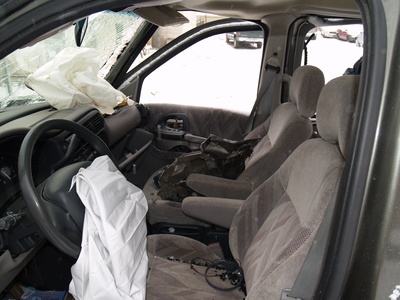
Over the last 30 years, airbags have become such a common safety feature in cars that they are now seen as a standard safety item, like seat belts.
Countless thousands have been saved by this ingenious solution, but as with most things, there are horror stories of them going wrong and injuring people.
Statistics suggest that fewer than 100 people in the U.S. have suffered fatal injuries from airbags, and it is important to remember that no matter how many of the tragic stories are true, airbags save people every day on roads around the world.
The standard airbag deploys at around 200 mph, and if you couple that with the deceleration involved in an accident, the bag hits with a lot of force.
This has resulted in complaints about injuries caused by airbags deploying. Unfortunately, the other option is to collide face-first with the dashboard.
One of the most common horror stories of the airbag revolves around infants in child seats in the front of a car getting crushed when the airbag is released.
A majority of these tragedies reportedly were caused by parents placing the child seat facing backward in the seat, against manufacturer's instructions. This means that when the airbag deploys, the back of the child seat absorbs the full impact, pushing the child's head into the back of the passenger seat.
Small children have been injured as the airbag is released with such force it can damage underdeveloped neck and back muscles.
Road-safety experts recommend that children under the age of 12 should sit only in the back seat to avoid this kind of injury.
Airbags are designed to protect the average person in a car crash. This means that smaller, taller and especially overweight people are at greater risk than most.
Smaller people have further to travel to the airbag, resulting in hitting it at a greater speed; taller people have a tendency to hit the airbag with their chests, causing broken ribs and organ damage; and overweight people have gotten trapped in their seats when the airbag was deployed.
Making airbags requires use of the harmful chemical sodium azide. It is released after deployment to inflate the bag and has been linked to illnesses called Airbag Syndrome.
Only a few cases have been reported worldwide, but it is more of an issue with older cars.
There is a chance the airbag could go off accidentally. This could be caused by an overly sensitive triggering mechanism. Cases such as these are rare.
Airbags are designed to deflate once the driver has hit the bag to prevent crushing or suffocating them. Rarely, this feature doesn't work.
In modern cars, a light on the dashboard indicates problems with the airbag.
This creates two issues: first, the average motorist sees a warning light and ignores it, assuming there is a problem with the light and not the airbag; second, mechanics have very few ways of checking to see if an airbag works without deploying it, and refilling an airbag canister can be quite pricey.
Toyota and Honda, both manufacturers with an excellent safety record, have recalled vehicles in the past year for faulty accelerators and airbags respectively.
How close you sit to the steering wheel can be an issue because the closer you are to the airbag when it deploys, the greater the impact. It is recommended that drivers be at least 10 inches from the steering wheel because of the airbag.